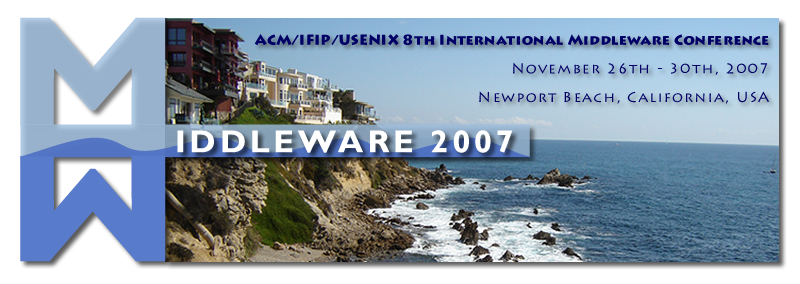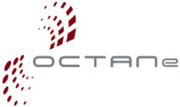
Keynotes:
Keynote I: Tuesday November 27, 2007
Middleware Should Think Globally and Act Locally
Mark Hapner, Distinguished Engineer and Chief Web Services Strategist
Sun Microsystems
(Slides)
A core function of middleware is to provide a compositional fabric to knit
the disparate applications and data in an enterprise together. In the past,
each middleware product included a proprietary composition infrastructure.
Customers chose between these and ended up with a proprietary composition
infrastructure at the center of their enterprise architecture. Today,
enterprises have the option of aligning their architectures with global
composition standards. If this is done, it allows the enterprise to own their
architecture and require their middleware vendors to align with it.
This is an important event in the history of middleware. It has the potential
to benefit both middleware customers and vendors; however, it raises new
challenges and creates new pitfalls. This talk focuses on the challenges of
practically applying global computing composition in an enterprise domain. It
presents a model that helps both middleware customers and vendors reason
about their roles in this new world of global computing and how to apply it
to solve local enterprise computing problems.
Keynote II: Thursday November 29, 2007
Meeting the Challenges of Ultra-Large-Scale
Distributed Real-time and
Embedded Systems with QoS-enabled Middleware and Model-Driven Engineering
Dr. Douglas C. Schmidt, Vanderbilt University
(Slides)
New and planned applications will run on ultra-large-scale (ULS)
distributed real-time and embedded (DRE) systems characterized by
thousands of platforms, sensors, decision nodes, actuators, and
operators connected through heterogeneous networks to achieve system
objectives. Software for traditional small-scale real-time and
embedded systems has been designed and provisioned using relatively
static techniques (such as rate monotonic analysis), so it could be
analyzed and validated using detailed and precise techniques (such as
static analysis and model-checking). In contrast, the size and
complexity of ULS systems motivates the need for dynamic adaptation
and autonomic behavior, which require significant R&D advances to
provide confidence that their implementations and adaptation
strategies can be depended upon to meet end-to-end requirements in
diverse operating environments.
This talk will explore the characteristics of ULS DRE systems that
affect their quality and present the results of initial attempts to
develop and validate QoS-enabled middleware and model-driven
technologies to assure key properties of today's large-scale systems
and runtime platforms. The talk will also discuss gaps in the
existing technology base that require significant R&D investment to
scale up to meet the ambitious demands of the next generation of ULS
DRE systems.








